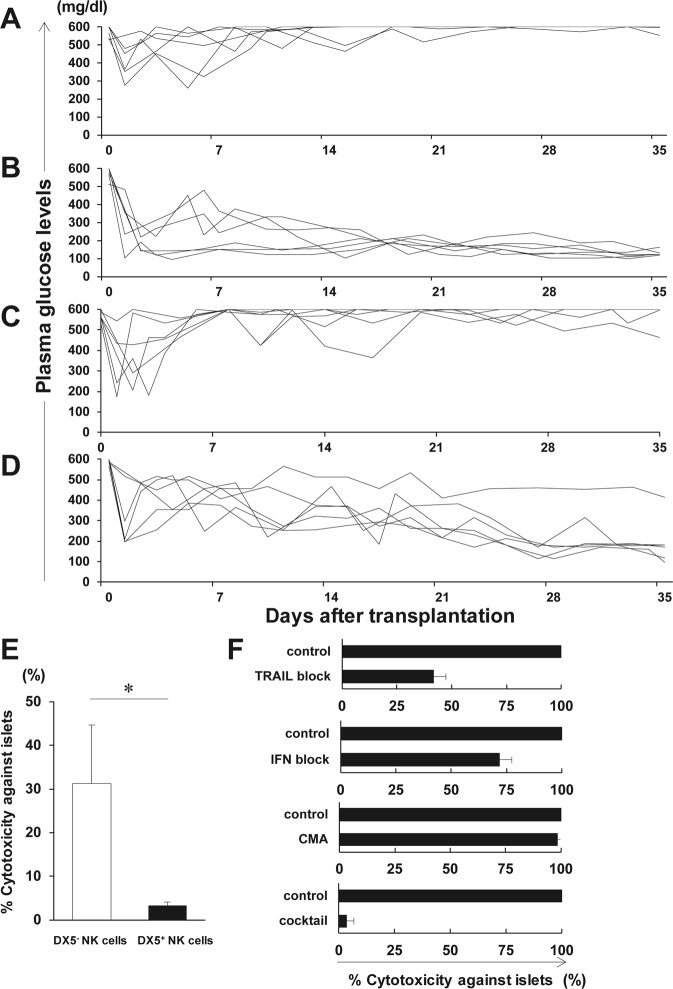Figure 1.
Involvement of liver DX5− natural killer (NK) cells in islet destruction after islet transplantation (IT). (A,B) Syngeneic islet graft survival in diabetic C57BL/6 (B6) wild-type (WT) or B6 CXCR3−/− mice was monitored by measuring the non-fasting plasma glucose level after intraportal IT. Glucose levels less than 200 mg/dL indicated diabetes reversal. Blood glucose levels of the control diabetic B6 WT or B6 CXCR3−/− mice that were intraportally transplanted with 200 syngeneic islets (n = 6). Data were collected from 5 independent experiments. (C,D) Syngeneic islet graft survival in diabetic B6 WT or B6 Tbx21−/− mice was monitored by measuring the non-fasting plasma glucose level after intraportal IT. Glucose levels less than 200 mg/dL indicated diabetes reversal. Blood glucose levels of the control diabetic B6 WT or B6 Tbx21−/− mice that were intraportally transplanted with 200 syngeneic islets (n = 6). Data were collected from 4 independent experiments. (E) The cytotoxicity of NK cells from B6 mice was tested using islets isolated from B6 mice as targets. NK cells were isolated from the liver of naive B6 mice and were used as effector cells at an E:T ratio of 105:1. The cytotoxicity of NK cells is shown in bar graphs (DX5− NK cells, open bar; DX5+ NK cells, solid bar) as the mean ± SD of 3 independent experiments (n = 3, pooled liver mononuclear cells were from 18 mice per experiment). *p < 0.05. (F) The cytotoxicity of DX5− NK cells with or without anti-TRAIL mAb, anti-IFN-γ mAb, or concanamycin A (CMA) is shown in bar graphs as the mean ± SD (n = 3 per mAb). The experiments were repeated 12 times (n = 17 mice per experiment). Data were collected from 7 independent experiments.

